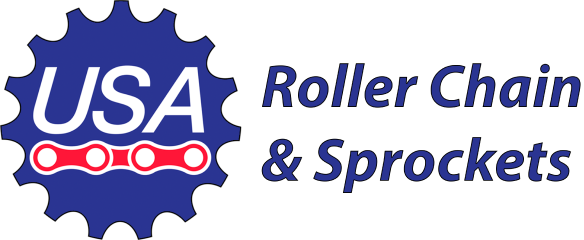High-Quality V-Belts
V-belts are utilized in a broad range of agricultural and industrial applications. The very first endless rubber v-belt was created in 1917 by the Gates Rubber cooperation. Its intended use was to transmit power with a great degree of efficiency at low noises. With the continued improvements in technology and rubber compounds, v-belts now transfer a significant amount of energy. They are even found in some of the most demanding applications in the world. V-belts work by being placed within a groove or grooves of a pulley with a specific tension, the bond and friction between the belt sides and inner facings of the groove create a working link for the transfer of energy. V-belts are becoming increasingly popular compared to gears and chain drives because of their ability to adapt and absorb power fluctuations, shocks, and overloads. V-belts also possess the ability to change in speed and torque easily by changing the diameter of the pulleys. At USA Roller Chain, we stock a complete selection of clastic, cogged, banded, metric, and double-sided v-belts. Our standard belts provide an economical solution for the transmission of energy. We also supply custom v-belts for specific applications and OEM projects. For additional information or to get a quote on V-Belts, contact our customer support team, and we will be happy to assist you!
Types Of V-Belts
Classic V-Belts - These belts are the most commonly used and are designated with the following letters; A, B, C, D, E. Classic v-belts have a standard angle of 40° and a top width to height ratio of 1.6:1Wedge V-Belts (Metric) - These belts are typically used in applications requiring higher power transmission within a more confined space. They are more common in metric applications and are made to ISO and DIN standards; they can operate 1.5 to 2 times the load of classic v-belts with the same top width. The big difference between these v-belts and classic v-belts is the top width to height ratio is 1.2:1, but these belts still have the same 40° wedge angle. Wedge v-belts also demonstrate a better cord construction and placement; this provides the highest strength while in operation. These belts are designated by the following letter sequences; SPZ, SPA, SPB, and SPC.
Narrow V-Belts - Narrow style v-belts are similar to the wedge v-belts by transmitting larger loads within a smaller form factor. These belts are designated by; 3V, 5V, and 8V. The numbers represent the top width of the belt; for example, 5V belts have a top width of 5/8".
Double-Sided (Hexagon) V-Belts - These belts have a unique design that allows for operation on either side of the belt and has the tension cord placed between the two v-sections (in the center of the belt). These belts are designed for applications with multiple pulleys that must be driven either clockwise or counterclockwise around a single or numerous reverse bends. Double-sided v-belts are designated with; AA, BB, CC, or DD.
Banded V-Belts - A banded v-belt is multiple v-belts banded together in parallel by a fabric cover or band at the top side. Banded belts are typically used in high power applications and are more efficient than using multiple single v-belts. Banded belts are available in classic, metric, and narrow belt types.
Fractional Horsepower V-Belts (FHP) - These v-belts are utilized in light-duty applications such as appliances, machine shop equipment, fans, etc... Designations for fractional horsepower v-belts include; 2L, 3L, 4L, and 5L. The number before L denotes the top width of the belt multiplied in terms of 1/8 of an inch.
Cogged V-Belts - Cogged v-belts are designed with notches at the bottom side of the belt. This allows for cooler and more efficient operation while also allowing for a tighter bend on smaller radius applications. Cogged belts are available in every type of v-belt series and are designated with an "X" behind the standard belt designation.
Agricultural V-Belts - V-belts that are made for agricultural grade applications are wrapped belts with a more abrasive wrapping that helps with dust, sand, grains, and other debris. They are also made from a more durable polyurethane blend with kevlar chords for higher torque and power capabilities.








